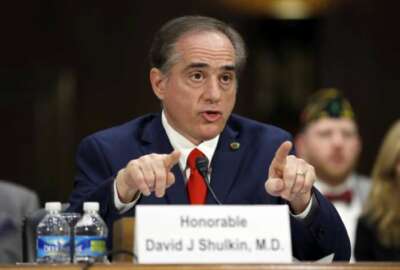

A new report from VA's inspector general illustrates how discrepancies in vacancy counts add to ongoing staffing issues within the agency, despite some improvements...
Discrepancies in staffing and vacancy reports in the Department of Veterans Affairs continue to hamper transparency of employee data in the Veterans Health Administration (VHA) and the Veterans Benefits Administration (VBA). This lack of transparency is leading to questions about the reliability of employee data within an agency that has seen consistent staffing shortages in recent years.
A report from the VA’s Office of Inspector General found that the number of vacancies documented in HR Smart — VA’s human resources information system that manages personnel records for more than 370,000 VA employees — differed from the actual number of vacancies within the agency. Meanwhile, the IG says more than 90% of VA vacancies were in VHA.
The IG indicated a 1.3% discrepancy between the authorized number of VHA positions and the number recorded in HR Smart from February 2020 through March 2021. Some VA medical facilities recorded counts in HR Smart that were either overstated by as much as 20.7%, or understated by as much as 23.9%.
This is the third report to come out of Section 505 of the VA Mission Act of 2018, which requires the IG release reviews every year on how VA position data is collected and published. The legislation spawned from reports in the past six years of VHA staffing shortages among physicians, nurses, custodial workers, police officers, practical nurses and general engineers.
VA, however, has worked toward fixing its data collection issues in recent years. An August 2020 memo mandated that local offices review their HR Smart data to reclassify vacant or approved positions. The measure amounted to a 41% decrease in the VA’s count of vacant positions for its October 2020 data release.
But this most recent report points out that there’s room for further improvement.
The faults in VA’s data trace back to VHA’s decentralized approach to reporting on staffing, with more than 140 separate human resources offices uploading data to HR Smart.
The report noted that local VA medical facilities utilized different methods for documenting staffing levels, leading to wide variability in the type of information included in VA employee data. And on top of that, the OIG found that three of the four VA medical facilities reviewed — including the Corporal Michael J. Crescenz VA Medical Center, Robert J. Dole VA Medical Center, Southeast Louisiana Veterans Health Care System and VA Eastern Colorado Health Care System — used inflated or outdated sources of information in their data cleanups.
“VA medical facilities’ data cleanup to support the position transparency initiative primarily consisted of comparing organizational charts and HR Smart position data,” the IG stated. “The facilities relied on charts that did not reflect budget constraints or were outdated.”
A stronger oversight mechanism, however, would improve the transparency of VA’s staffing and vacancy data.
The IG suggested VA develop an agencywide practice of independently validating HR Smart position inventory, as well as a standardized policy for the documentation of staffing level approvals at VA medical facilities.
The recommendations would enable VA to publish figures in its quarterly personnel reports that best reflect the agency’s staffing needs. VA announced in the report that it will implement these policies by October 2021.
“We welcome opportunities for VA to improve the transparency of HR Smart’s position data,” Jeffrey R. Mayo, VA’s acting assistant secretary for human resources and administration/operations, security and preparedness, stated in the report. “HRA/OSP, in collaboration with the Veterans Health Administration, will continue to work with the OIG and all relevant stakeholders to improve position data in HR Smart for improved reporting on staffing and vacancy data.”
Copyright © 2025 Federal News Network. All rights reserved. This website is not intended for users located within the European Economic Area.



